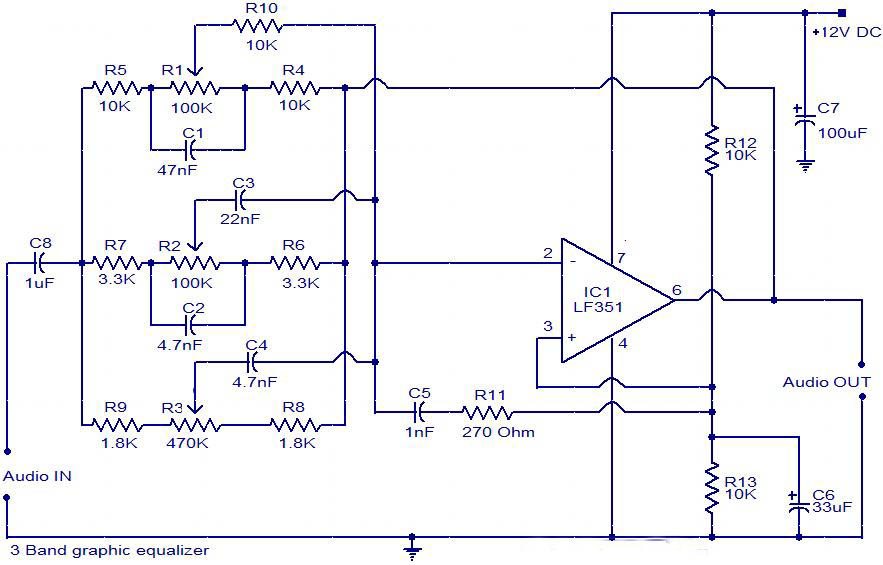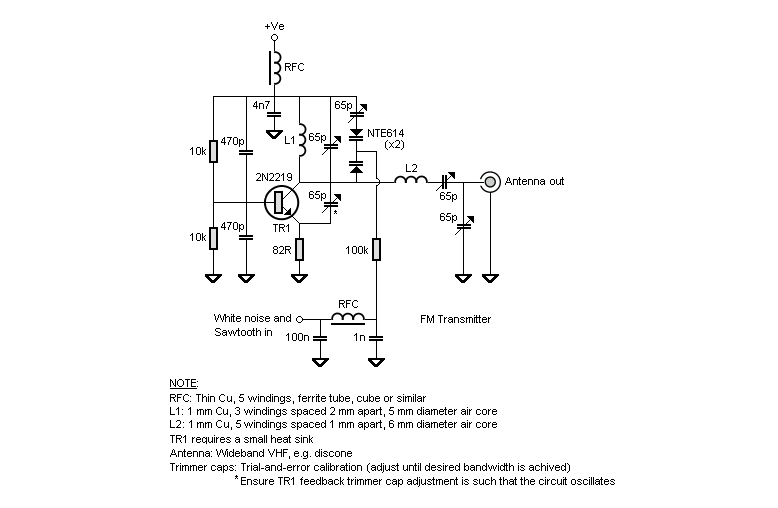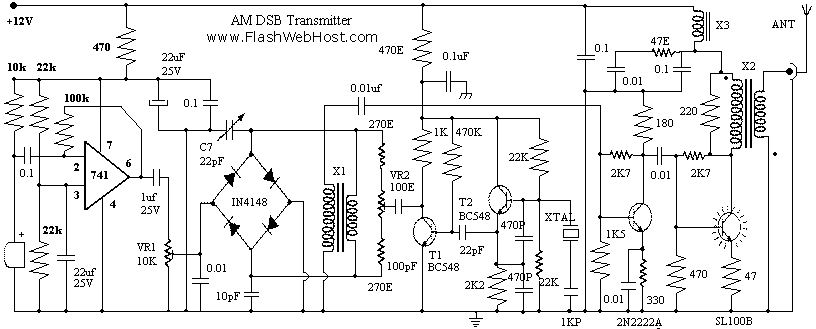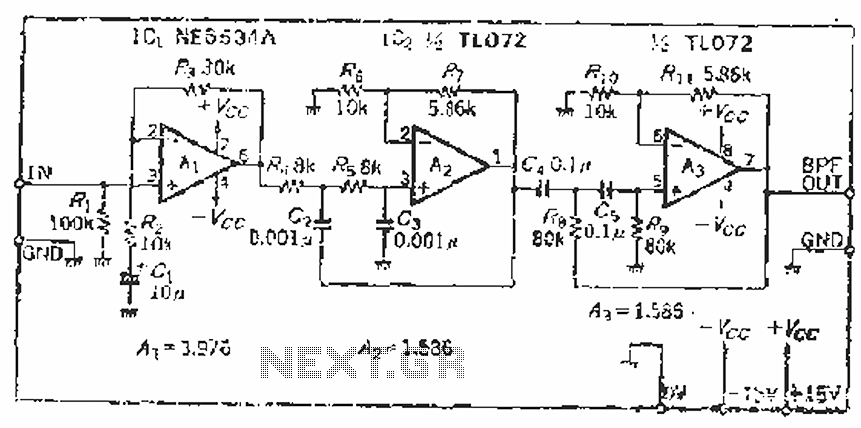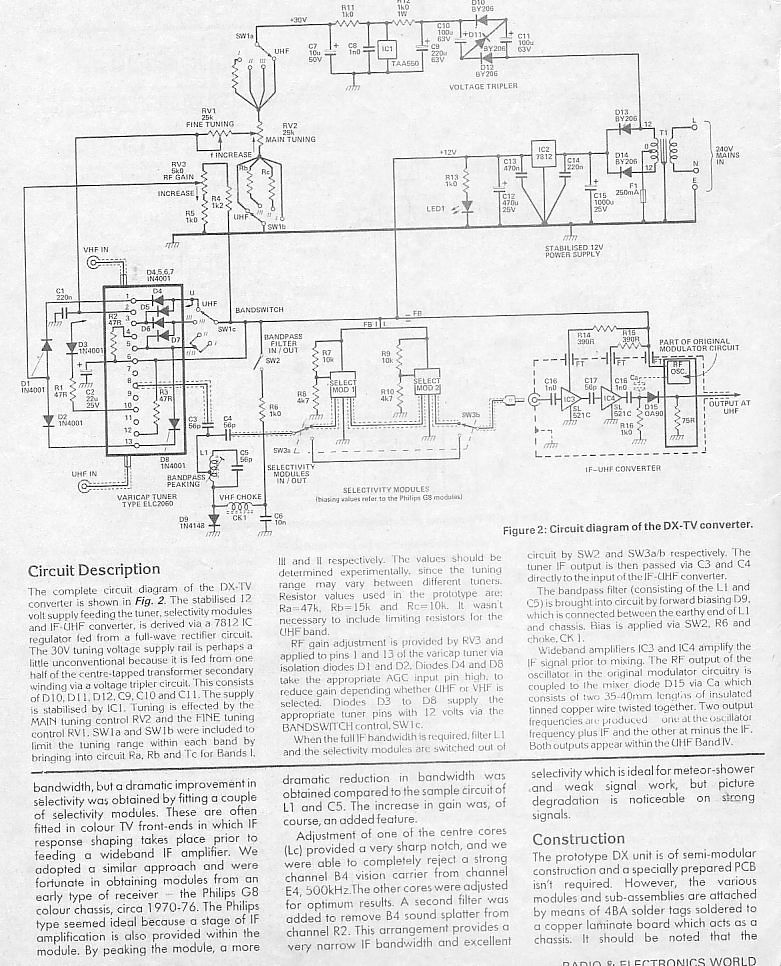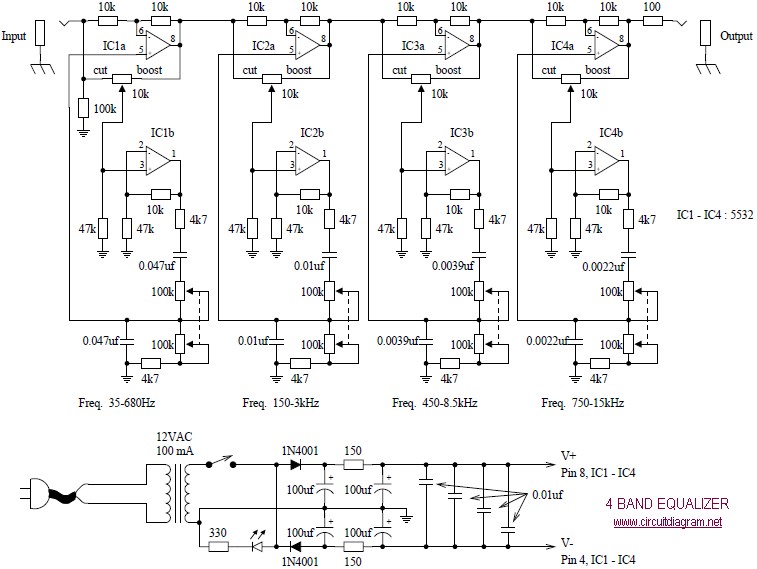
10 band equalizer
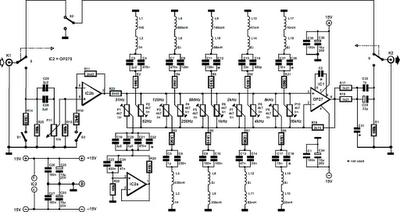
The equalizer described is designed for hi-fi installations, public address systems, mixers, and electronic musical instruments. Relay contacts at the inputs and outputs, in conjunction with switch S2, allow for the selection of the desired channel. The input can be directly linked to the output if needed. The input impedance and amplification of the equalizer are adjustable using switches S1 and S3. The audio frequency spectrum, ranging from 31 Hz to 16 kHz, is divided into ten bands, requiring ten filters—nine of which are passive and one active. The passive filters are identical in design, differing only in the values of the corresponding inductors and capacitors. The desired characteristics of the filters are achieved through series and parallel networks. The lowest frequency band filter is an active design to avoid excessively large inductance values and is based on a traditional op-amp configuration with op-amp A1. The inductors used in the passive filters are standard small chokes. The filter utilizing inductors L1 and L2 operates at approximately the lowest frequency (62 Hz) achievable with standard passive components. The quality factor (Q) of the filters can be slightly increased by raising the values of resistors R19 and R23, as well as potentiometers P1 to P10, although this may increase the noise level of op-amp IC1. With the specified component values, the control range is about ±11 dB, which is adequate for most applications. A significantly larger range would require a major redesign. The input level can be adjusted with potentiometer P1, which may be necessary for balancing the channels or when a loudness control is used in the output amplifiers. Various types of op-amps can be used; in the prototype, IC1 is an LT1007 and IC2 is an OP275. Other suitable options for IC1 include OP27 or NE5534, while IC2 can be replaced with AD712, LM833, or NE5532. If NE5534 is selected for IC1, capacitor C2 is required; otherwise, it is not necessary. The circuit is powered by a regulated symmetrical 15 V supply and draws a maximum current of approximately 10 mA.
The equalizer circuit is structured to effectively manage audio signals across a wide frequency range, making it versatile for various audio applications. The ten-band equalization allows for precise control over the audio output, enabling users to tailor the sound to their preferences or specific acoustic environments. The use of both passive and active filters ensures that the design remains compact while still achieving the desired frequency response.
The active filter, which is critical for managing the lowest frequency band, utilizes an operational amplifier to provide the necessary gain without the need for large inductors, which can introduce unwanted size and complexity. The passive filters, being identical in design, simplify the manufacturing process while allowing for easy adjustments to the frequency response by merely changing component values.
The adjustable input impedance and amplification settings provide flexibility, allowing the equalizer to interface with various audio sources and maintain optimal signal integrity. The inclusion of potentiometers for input level adjustment ensures that users can fine-tune the output, especially when integrating with other audio equipment that may have differing output levels.
The choice of operational amplifiers is crucial for maintaining low noise levels and high fidelity in audio processing. The specified op-amps are known for their performance in audio applications, providing a reliable foundation for the equalizer's functionality. The requirement for a regulated 15 V supply ensures stable operation, which is essential for high-quality audio processing.
Overall, this equalizer design is a robust solution for enhancing audio performance in a variety of settings, combining advanced filtering techniques with user-friendly controls for optimal sound management.The equalizer presented in this article is suitable for use with hi-fi installations, public-address systems. mixers and electronic musical instruments. The relay contacts at the inputs and outputs, in conjunction with S2, enable the desired channel to be selected.
The input may be linked directly to the output, if wanted. The input impedance and amplification of the equalizer are set with S1 and S3. The audio frequency spectrum of 31 Hz to 16 kHz is divided into ten bands. Ten bands require ten filters, of which nine are passive and one active. The passive filters are identical in design and differ only in the value of the relevant inductors and capacitors. The requisite characteristics of the filters are achieved by series and parallel networks. The filter for the lowest frequency band is an active one to avoid a very large value of inductance. It is based in a traditional manner on op amp A1. The inductors used in the passive filters are readily available small chokes. The filter based on L1 and L2 operates at about the lowest frequency (62 Hz) that can be achieved with standard, passive components.
The Q(uality) factor of the filters can, in principle, be raised slightly by increasing the value of R19 and R23, as well as that of P1 P10, but that would be at the expense of the noise level of op amp IC1. With component values as specified, the control range is about ±11 dB, which in most case will be fine.
A much larger range is not attainable without major redesign. The input level can be adjusted with P1, which may be necessary for adjusting the balance between the channels or when a loudness control is used in the output amplifiers. Several types of op amp can be used:in the prototype, IC1 is an LT1007, and IC2, an OP275. Other suitable types for IC1 are OP27 or NE5534; and for IC2, AD712, LM833 and NE5532. If an NE5534 is used for IC1, C2 is needed; in all other cases, not. The circuit needs to be powered by a regulated, symmetrical 15 V supply. It draws a current of not more than about 10mA. 🔗 External reference
The equalizer circuit is structured to effectively manage audio signals across a wide frequency range, making it versatile for various audio applications. The ten-band equalization allows for precise control over the audio output, enabling users to tailor the sound to their preferences or specific acoustic environments. The use of both passive and active filters ensures that the design remains compact while still achieving the desired frequency response.
The active filter, which is critical for managing the lowest frequency band, utilizes an operational amplifier to provide the necessary gain without the need for large inductors, which can introduce unwanted size and complexity. The passive filters, being identical in design, simplify the manufacturing process while allowing for easy adjustments to the frequency response by merely changing component values.
The adjustable input impedance and amplification settings provide flexibility, allowing the equalizer to interface with various audio sources and maintain optimal signal integrity. The inclusion of potentiometers for input level adjustment ensures that users can fine-tune the output, especially when integrating with other audio equipment that may have differing output levels.
The choice of operational amplifiers is crucial for maintaining low noise levels and high fidelity in audio processing. The specified op-amps are known for their performance in audio applications, providing a reliable foundation for the equalizer's functionality. The requirement for a regulated 15 V supply ensures stable operation, which is essential for high-quality audio processing.
Overall, this equalizer design is a robust solution for enhancing audio performance in a variety of settings, combining advanced filtering techniques with user-friendly controls for optimal sound management.The equalizer presented in this article is suitable for use with hi-fi installations, public-address systems. mixers and electronic musical instruments. The relay contacts at the inputs and outputs, in conjunction with S2, enable the desired channel to be selected.
The input may be linked directly to the output, if wanted. The input impedance and amplification of the equalizer are set with S1 and S3. The audio frequency spectrum of 31 Hz to 16 kHz is divided into ten bands. Ten bands require ten filters, of which nine are passive and one active. The passive filters are identical in design and differ only in the value of the relevant inductors and capacitors. The requisite characteristics of the filters are achieved by series and parallel networks. The filter for the lowest frequency band is an active one to avoid a very large value of inductance. It is based in a traditional manner on op amp A1. The inductors used in the passive filters are readily available small chokes. The filter based on L1 and L2 operates at about the lowest frequency (62 Hz) that can be achieved with standard, passive components.
The Q(uality) factor of the filters can, in principle, be raised slightly by increasing the value of R19 and R23, as well as that of P1 P10, but that would be at the expense of the noise level of op amp IC1. With component values as specified, the control range is about ±11 dB, which in most case will be fine.
A much larger range is not attainable without major redesign. The input level can be adjusted with P1, which may be necessary for adjusting the balance between the channels or when a loudness control is used in the output amplifiers. Several types of op amp can be used:in the prototype, IC1 is an LT1007, and IC2, an OP275. Other suitable types for IC1 are OP27 or NE5534; and for IC2, AD712, LM833 and NE5532. If an NE5534 is used for IC1, C2 is needed; in all other cases, not. The circuit needs to be powered by a regulated, symmetrical 15 V supply. It draws a current of not more than about 10mA. 🔗 External reference
